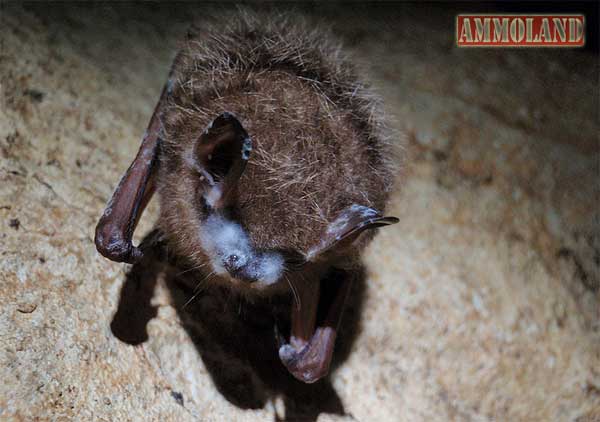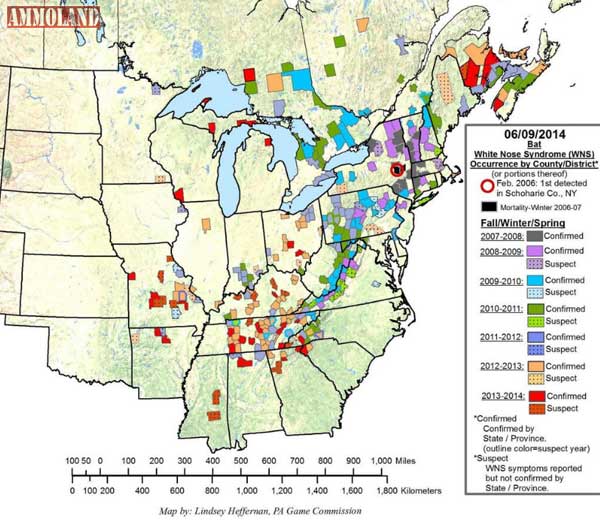
Washington, DC –-(Ammoland.com)- The fungus known to cause white-nose syndrome (WNS) in hibernating bats, a disease that has decimated bat populations in the eastern United States and Canada, was recently discovered for the first time in Mississippi.
The fungus, *Pseudogymnoascus destructans,* was detected in samples collected from several caves and road culverts in eastern Mississippi this past winter through a National Science Foundation-funded monitoring project.
Kathy Shelton, conservation biologist for the Mississippi Department of Wildlife, Fisheries and Parks, and the Mississippi Museum of Natural Science says the infection is at very low levels right now, but that could change.
“It is very concerning that we have found the fungus in Mississippi,” says Shelton, “but we have not found white-nose syndrome yet in our state, and will work hard to monitor the health of bats in Mississippi.”
Mississippi is one of three states where the fungus has been detected but WNS has not been confirmed. The fungus was also detected last year in Iowa and Minnesota, but to date, WNS has not been confirmed in those states. In contrast, *P. destructans* was also detected for the first time in Arkansas last year, and this year, the first bat mortalities from the disease were observed in the state.
Since its detection in New York in 2007, WNS has been confirmed in 25 states and five Canadian Provinces. Winter bat colonies in some states have declined by more than 90 percent.
“With WNS established in the surrounding states, the detection of *P. destructans* in Mississippi does not come as a surprise,” said Jeremy Coleman, national WNS coordinator for the U.S. Fish and Wildlife Service. “As WNS moves south and west, we are particularly interested in monitoring the progression of the disease, especially as new species and regions are exposed.”
WNS does not infect humans and is only known to affect cave-hibernating bats. There is no known treatment for wild bat populations. The fungus thrives in cold, humid environments and invades the skin of bats, disrupting their hibernating behavior and depleting their fat stores. The final cause of death of infected bats is still under investigation.
Mississippi has monitored for WNS since 2011, and surveys will expand next winter to include more caves and culverts with hibernating bat populations.

To help prevent the spread of the fungus, all potential visitors to area caves should consult cave managers to check on access restrictions. Cavers should always follow strict gear restriction and decontamination procedures, and cave managers should ensure that visitors adopt these practices. For example, no clothing or equipment that has been worn in a cave in eastern North America should be worn when visiting subsequent caves or mines outside of the WNS area, and equipment used in WNS-affected states and provinces should be thoroughly cleaned and disinfected before use.
“Since we know the fungus can be transmitted on clothing and gear, we hope to slow its spread through our state,” says Shelton.
Information about WNS decontamination protocols can be found on the national WNS website at www.whitenosesyndrome.org/.
Connect with our white-nose syndrome Facebook page at www.facebook.com/usfwswns, follow our tweets at www.twitter.com/usfws_wns.
About:
The mission of the U.S. Fish and Wildlife Service is working with others to conserve, protect and enhance fish, wildlife, plants and their habitats for the continuing benefit of the American people. We are both a leader and trusted partner in fish and wildlife conservation, known for our scientific excellence, stewardship of lands and natural resources, dedicated professionals and commitment to public service. For more information on our work and the people who make it happen, visit www.fws.gov.
